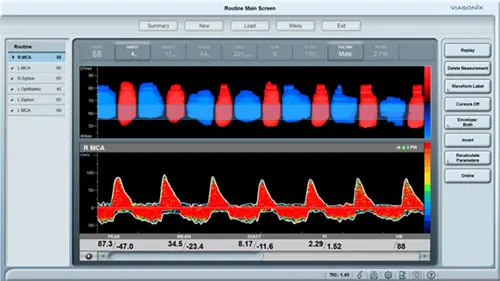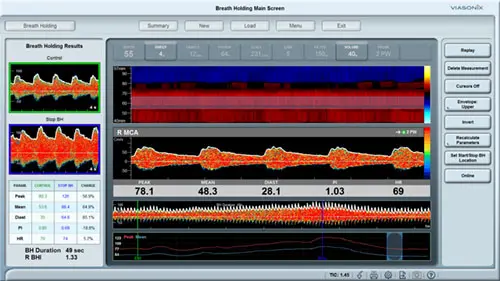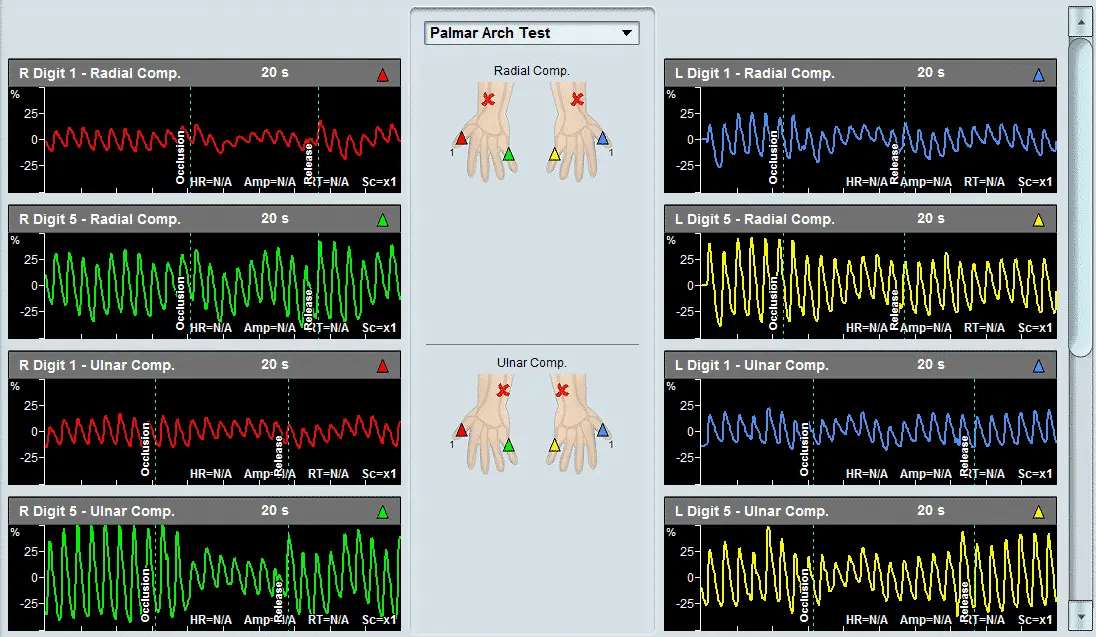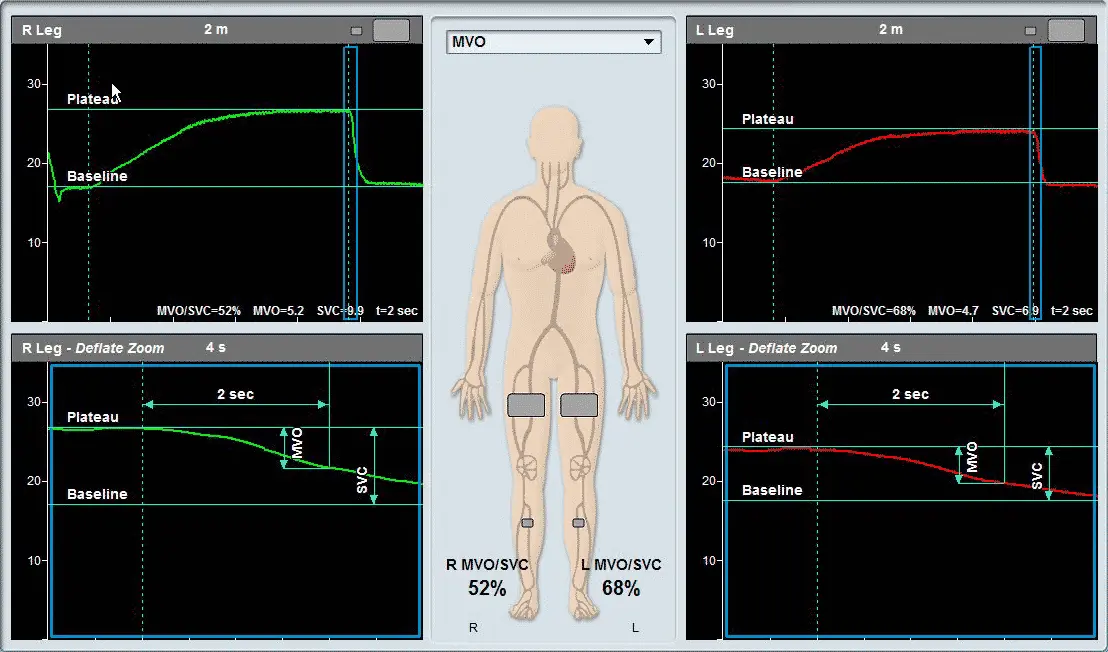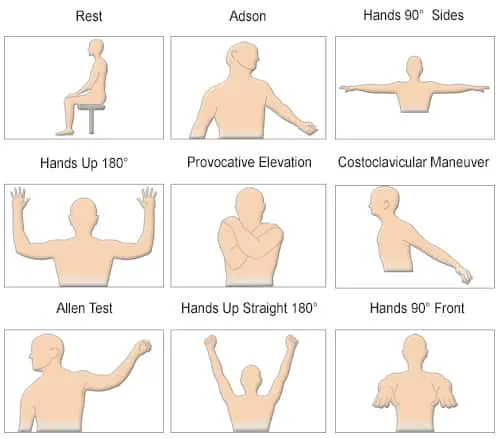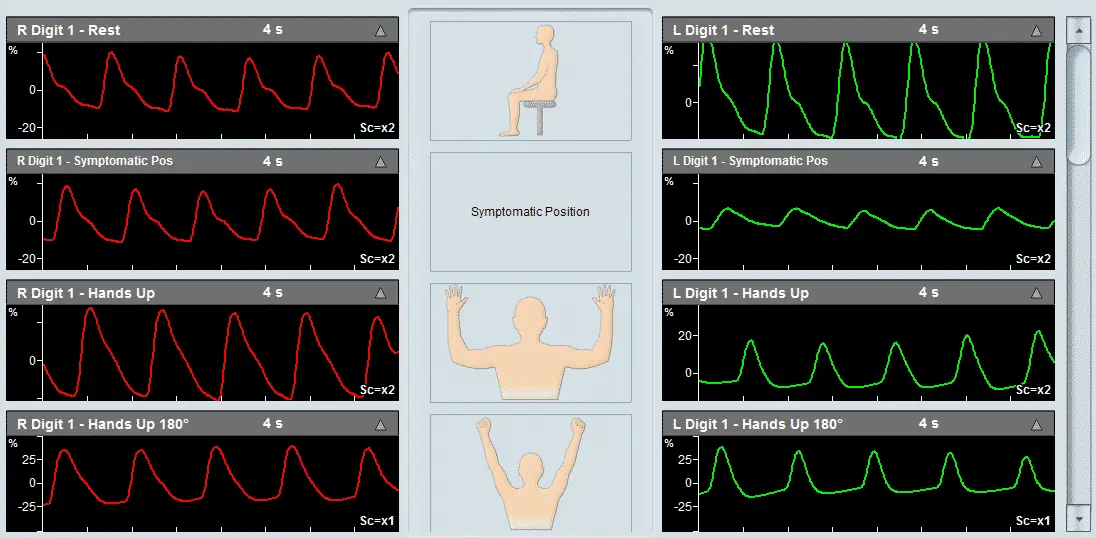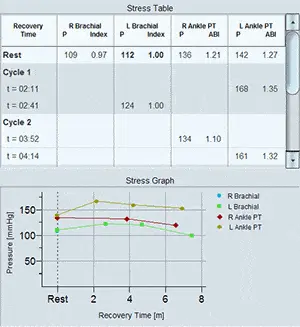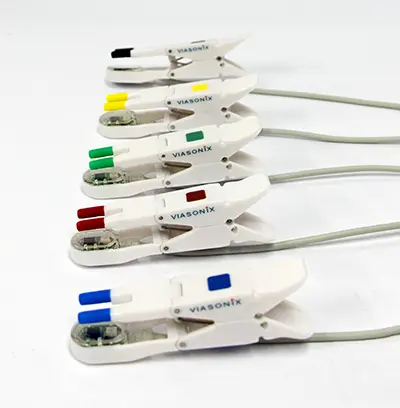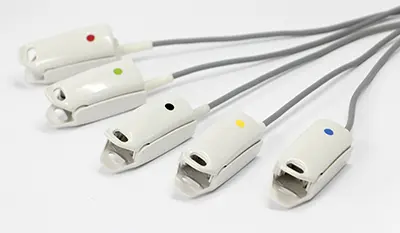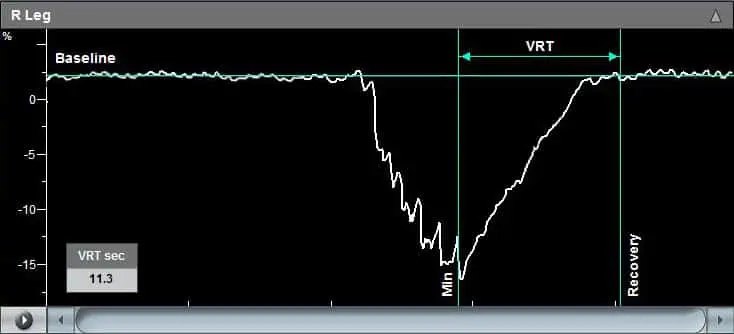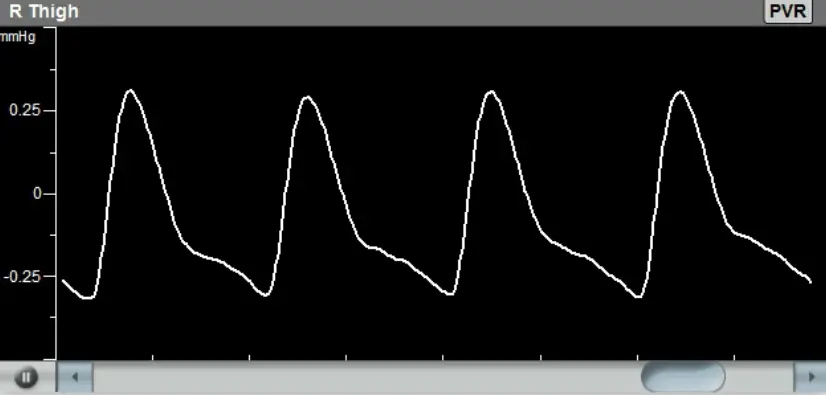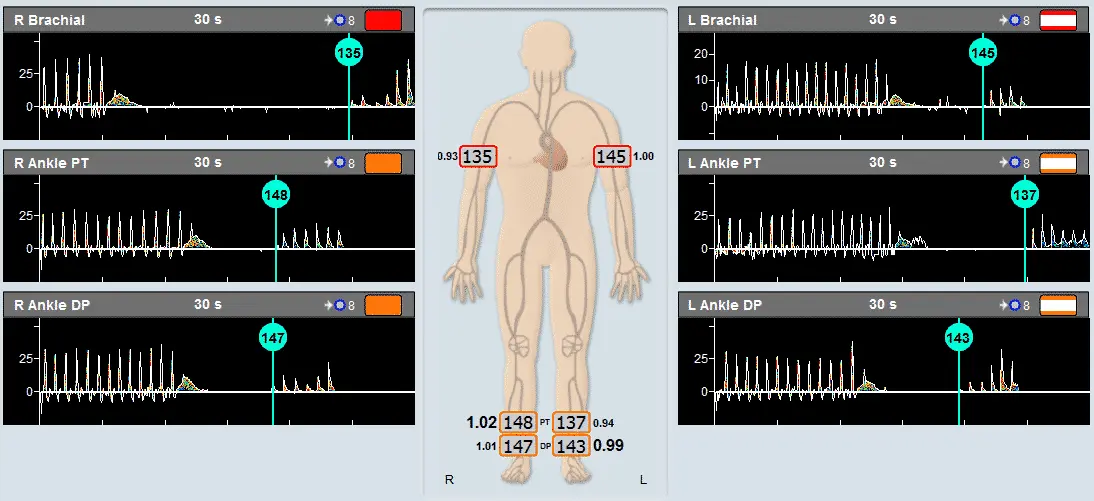What are Segmental Blood Pressures?
Lower extremity Segmental Blood Pressures (SBP) diagnosis refers to the measurement of the systolic blood pressure at various sites along each leg.
Segmental blood pressures is a physiologic test, which is performed using a physiologic machine in order to help in localizing arterial obstruction to flow along the limb, as well as the physiological severity of the obstruction. This is in contrast to ultrasound imaging of the lower limb, which is focused on detecting and quantifying the anatomical severity of the arterial obstruction to flow.
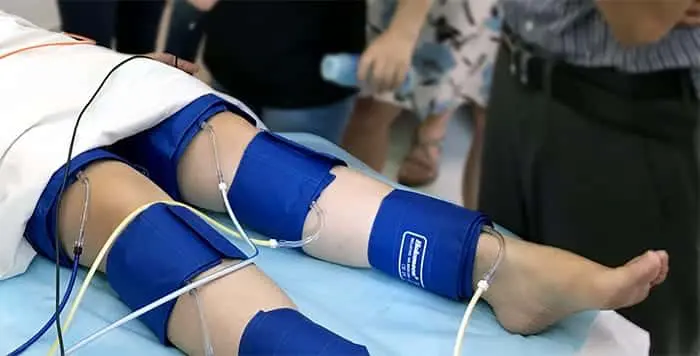
Physiologic and anatomical two types of tests complement each other. They are frequently performed one after the other to diagnose both the physiological and the anatomical severity of the pathology for optimal clinical diagnosis.
Segmental Blood Pressures typically include the following lower extremity sites:
- Thigh
- Above knee
- Below knee
- Ankle
- Sometimes calf, metatarsals, and toes are also included.
How to Measure Segmental Blood Pressures
A segmental pressures machine is required for this test. Performing the lower limb segmental blood pressure test is fast and simple. It requires placing dedicated pressure cuffs on each target site along each leg and then inflating each cuff separately while measuring the downstream Doppler or PPG waveform. Most importantly, Doppler is superior and is widely considered the gold standard method.
Doppler is typically measured at the level of the Posterior Tibial (PT) or Dorsalis Pedis (DP) arteries, while PPG is measured on the toes. When the cuff inflation pressure exceeds the arterial systolic pressure, the cuff pressure is gradually bled until the distal Doppler or PPG waveforms re-appear. The pressure of the initial re-appearance is considered the systolic pressure.
The measurement process typically starts at the ankle level and then moves up along the leg to minimize the occlusion effect on the complete limb.
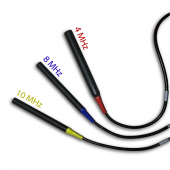
Doppler Probes
Gold Standard ABI Measurement Method
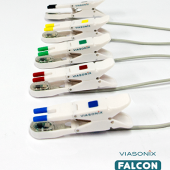
PPG Sensors
Secondary Method of ABI Assessment

Inflatable Cuffs
High quality available in a variety of sizes
Using the Falcon for SBP Test
The Falcon segmental pressures machine is designed for straight-forward segmental blood pressure measurements. Specifically, the Falcon/Pro is the ideal model to use, as it has 10 separate color-coded pressure channels allowing quick and effective diagnosis. First, the pressure cuffs are wrapped around each target site along both the right and left legs. Then, a lower extremity protocol needs to be selected. At this point, the test is ready to start and can be completed in a matter of just a few minutes.
To complete the test, a single button can be used. However, the user has the option to determine the preferred target inflation pressure, deflation rate, sweep time display, gain, filter, display scale, and more. A wide range of Doppler probes of various frequencies (4MHz, 8MHz, 10 MHz) is available for optimal measurements according to the target vessel, as well as a wide range of color-coded PPG sensors (Disk, toe clips, finger clips) for ease of use.
Additionally, many other Falcon features and options, such as automatic cuff inflation as soon as a signal is identified, simultaneous measurements, display of contralateral results, and many more options are all designed to simplify the use of the Falcon physiologic system in a fast and efficient way.
In conclusion, the Falcon allows completing the test rapidly. Once the PT or DP Doppler waveforms are obtained, all that is needed is to sequentially inflate and then deflate each ipsilateral pressure cuff along the leg until the Doppler waveform re-appears, freeze the measurement and start the process with the next pressure cuff up the leg. Finally, an automatic cursor is placed at the proposed systolic pressure location, and the user can manually adjust the location for improved results. It is important to note that the pressure index is automatically displayed for each site, calculated as the site systolic pressure divided by the higher systolic pressure of the right/left brachial.
Expected Results of Segmental Blood Pressures
When measuring segmental blood pressures, the focus is on the pressure difference between each 2 consecutive adjacent sites, as well as the pressure difference between similar sites on the right and left legs.
A relatively large pressure difference (or pressure drop) suggests the location of the pathology. For example, a large pressure drop between the thigh and the adjacent above knee site suggests an arterial obstruction to flow, which is located between the thigh and the knee.
The magnitude of the pressure drop threshold that marks a pathological condition may vary from one institute to another. Still, a common thumb rule is a pressure difference which is typically larger than 20 mmHg.

